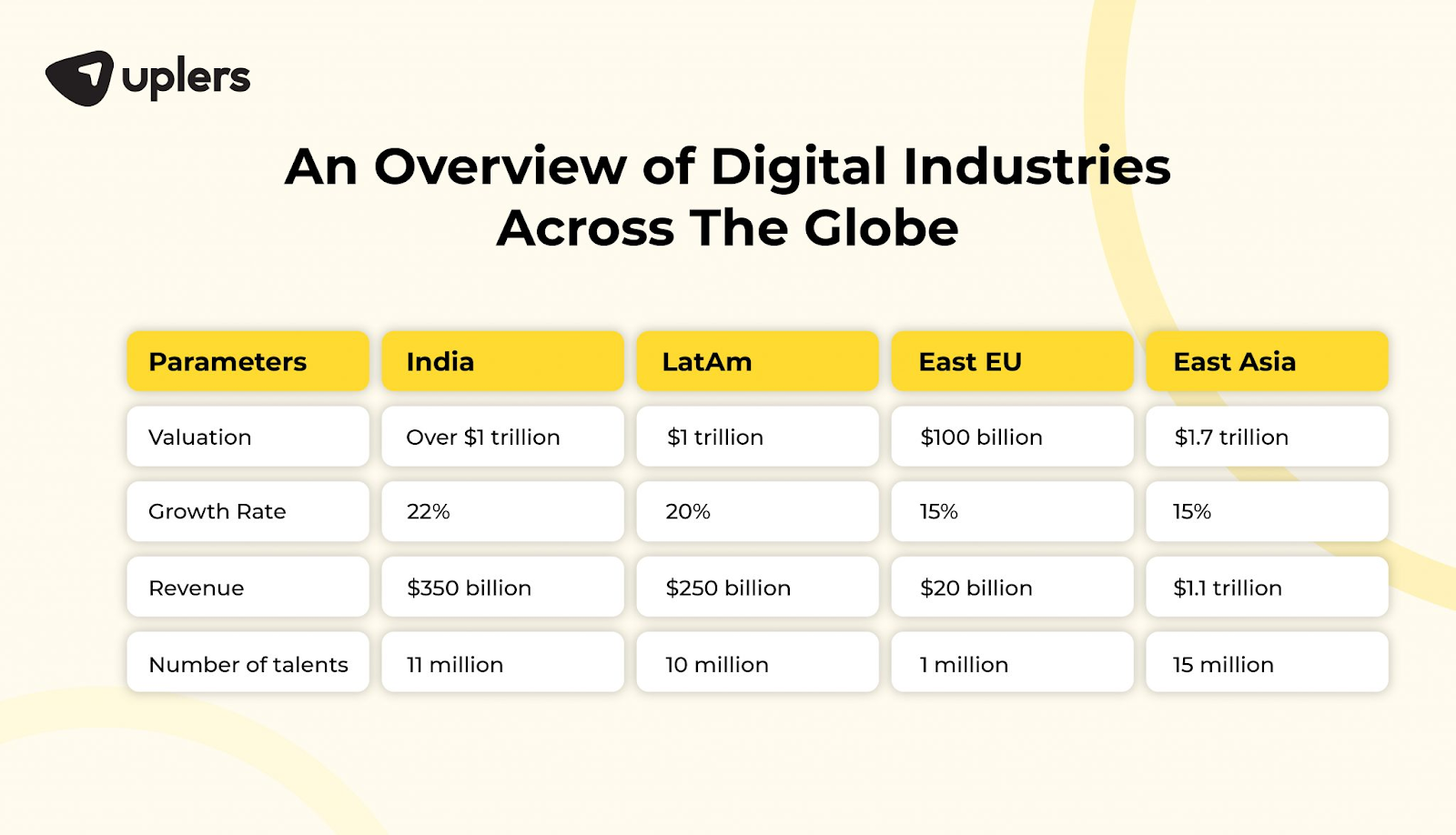Comments
- No comments found

The hiring landscape went through a major shake-up in 2021-22.
The recession in the US economy triggered massive layoffs in the tech and digital industries. In the first week of 2022, almost 45,000+ employees were laid off from Amazon, Microsoft, Salesforce, SAP, and many other large and small-scale companies. The economic downturn compelled businesses to cut down their costs to support their services, and they had to let go of a large chunk of their workforce. This was a surprising turn of events from the promising hiring activity in the previous couple of years.
However, companies did not give up on this setback and continued to build a stronger workforce, but with a different approach. Let us discuss what agencies and tech startups learned from this setback and how they realized remote hiring is a reliable way of upscaling their workforce.
Due to the layoffs, agencies and tech startups were under pressure to meet operational goals with a smaller workforce. They acknowledged the mistake of hiring aggressively in the past and became cautious while looking for suitable talents to close the vacancy. The priorities of the recruiters have also changed. Technical proficiency that adds value to the organization and contributes to business goals, and aligning with the organization’s ethos are now integral aspects of the ideal candidate. Such a top talent will be extremely valuable to the company and more important to retain.
While companies were dealing with the economic setback, the cost of living in several regions skyrocketed, leading to local talents demanding a higher salary. While enterprise-level businesses could still pursue these candidates, the same was not possible for small to medium-sized companies with limited budgets and resources. This motivated the latter to explore offshore countries and hire their talents remotely. Now they had access to cost-effective talents who met their requirements for building a long-term productive team.
The rise of hiring platforms also supported the remote hiring aspirations of these agile businesses, as they could source, vet, and onboard their ideal remote talent in a faster and more reliable way. These platforms do most of the heavy lifting in the remote hiring process and help recruiters focus only on choosing their preferred profile and onboarding them. Consequently, agencies will be able to optimize their hiring cycle and onboard the talent in a matter of days to continue operations and meet deadlines.
To suffice, fast-paced companies had three major takeaways from the last two years: Hire remote talents, focus on skill and culture evaluation, and prioritize a faster hiring process with the help of hiring platforms.
Businesses that hire remote workers are not necessarily working in a fully distributed setup. As you know, the biggest advantage of remote hiring is to fetch skilled talent from cost-effective regions. So, it is wiser to analyze which roles are better hired and managed in a distributed setup and which can be better sourced locally.
You should generally hire these roles remotely:
Those with a high demand-supply gap (Data scientist, Web analytics)
Niche skills that are expensive locally (Android developers, Performance marketing specialists)
Key operations roles (Graphic designers, Business analysts)
When it comes to choosing the region for hiring remote talents, the most common options are India, Latin America, East EU, and East Asia. These regions have a massive pool of talents with expertise in emerging and in-demand technologies. However, in the last five years, India has been the hiring destination of choice amongst digital agencies and tech startups. Have a look at this comparison:

India: 11 million tech and digital talents, preferred by 62.5% of global businesses for remote hiring and outsourcing.
LatAm: 10 million tech and digital talents, preferred by 28.6% of global businesses for remote hiring and outsourcing.
East EU: 1 million tech and digital talents, preferred by 42.4% of global businesses for remote hiring and outsourcing.
East Asia: 15 million tech and digital talents, preferred by 49.8% of global businesses for remote hiring and outsourcing.
In 2024, almost 16,000+ companies are expected to hire talents remotely. Almost 48% of such companies are looking to use digital platforms for remote hiring, which presents a favorable future where global companies will have access to cost-effective and skilled talents. The focus on skills assessment during hiring is also growing, as 62% of tech startups use digital vetting tools to assess their candidates.
These tools help in making informed hiring decisions, leading to higher chances of finding the right talent and better retention rates. Going ahead, companies with such a flexible approach to hiring will be able to compete for top talents and achieve their business goals.
Leave your comments
Post comment as a guest